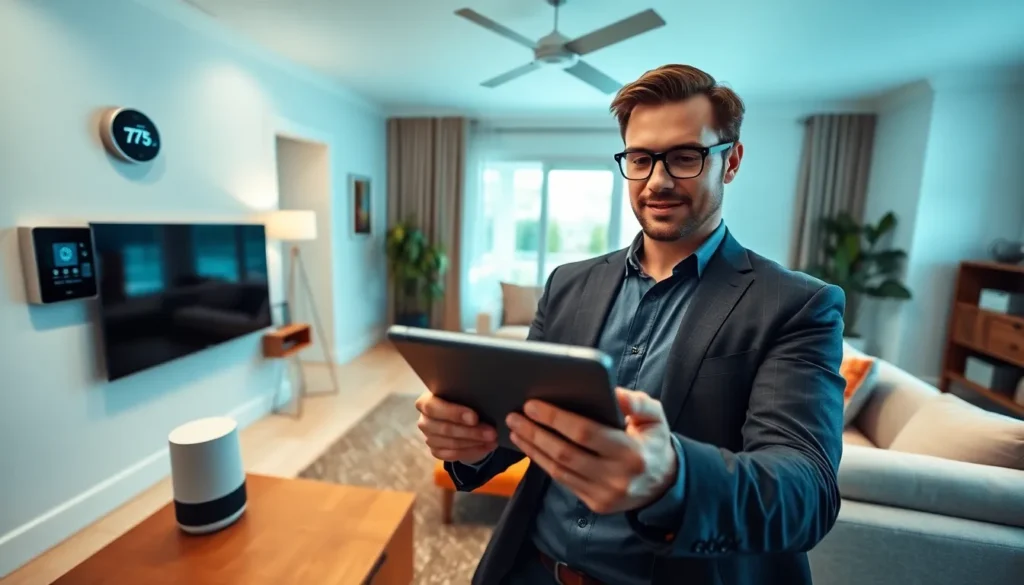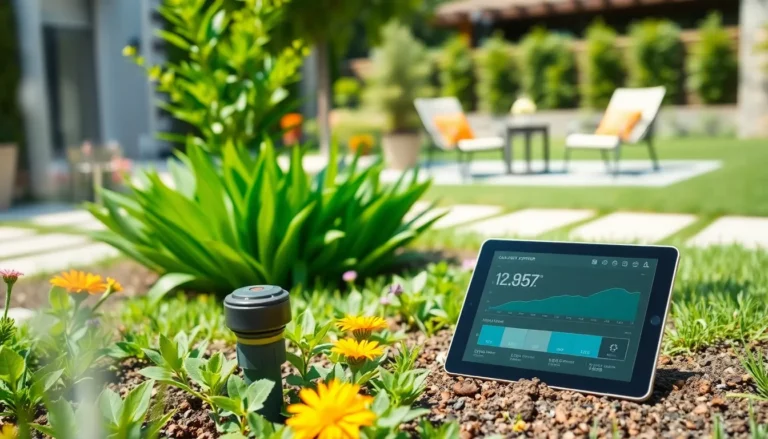Table of Contents
TogglePicture this: you’ve just invested in a state-of-the-art smart home system. Lights that turn on with your voice, a thermostat that knows your comfort preferences, and cameras that keep watch while you dream sweetly. Sounds like a tech-savvy utopia, right? But wait, what happens when your smart devices become gateways for unwanted intruders? If you think hackers are just lurking in the shadows of your Wi-Fi, think again. Securing your smart home devices isn’t just a good idea: it’s essential. Immerse to discover how you can protect your digital sanctuary.
Understanding Smart Home Security Risks

Common Vulnerabilities in Smart Home Devices
Smart home devices come packed with features but often lack robust security measures. Weak firmware, default configurations, and unencrypted data transmissions leave the door wide open for cybercriminals. Vulnerabilities can include poor password management, outdated software, and even insecure Wi-Fi connections. Each device, whether it’s a smart lock or a cloud-connected camera, presents a unique target for offenders.
Risks Associated with Unsecured Devices
The risks tied to these unsecured devices are staggering. Think of it this way: if someone gains access to your security cameras, they can watch your every move. Even worse, an intruder could bypass your smart locks or, in a nightmarish scenario, access your home’s heating system to manipulate it. The stakes are high, and the risks don’t just end at privacy violations, the consequences can go as far as physical security breaches.
Best Practices for Securing Your Smart Home
Change Default Passwords and Use Strong Credentials
Most smart devices come with default settings that are woefully easy to guess. If you don’t change these passwords, accessing your devices becomes child’s play for anyone with some tech savvy. Create strong, unique passwords using a combination of letters, numbers, and symbols. And remember, if it’s easy for you to remember, it’s probably easy for hackers too.
Update Firmware Regularly
Manufacturers continuously work on updates to patch vulnerabilities in their devices. Failing to install firmware updates is akin to leaving the front door unlocked. Set up reminders to check for updates regularly or enable automatic updates if available. Staying current can fortify your smart home against emerging threats.
Enable Two-Factor Authentication (2FA)
Two-factor authentication adds an extra layer of security by requiring two methods of verification before granting access. Even with a strong password, enabling 2FA can make it significantly tougher for unauthorized users to breach your device. So, when that prompt comes up to verify your identity via a text or email, just do it. Your smart home will thank you.
Use a Separate Wi-Fi Network for Smart Devices
Creating a dedicated network for your smart devices can help keep your personal data safe. By isolating these gadgets from your main network, you reduce the risk of a full-scale breach. Consider segmenting your Wi-Fi, allowing only smart devices and guest users on one network while reserving your primary network for personal devices and sensitive information.
Monitor Device Activity and Notifications
Tools for Managing Smart Home Security
Keeping tabs on your smart home’s activity can prevent issues before they escalate. Security apps and smart home ecosystems often include monitoring features. Make sure you’re utilizing all available tools to gain real-time insights into your device activities. Noticing unusual patterns or notifications about unauthorized access attempts can save you from severe repercussions.
Identifying Suspicious Behavior
If your devices are acting strangely, sending you alerts when nothing is amiss or responding in unexpected ways, it might be time to take action. Look for irregularities like sudden spikes in data usage or unfamiliar logins. Keeping a vigilant eye on your smart devices will help you catch potential threats before they result in disaster.







